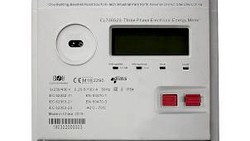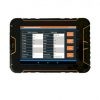From time to time there are some questions regarding the acceptance inspection (FAT) for energy meters. This paper is to clarify the legal and metrological matters.
The IEC 61358 (later referred to old) was published in May 1996 and withdrawn in September 2008. The old standard has been replaced by IEC 62058-11 and IEC 62058-31.
This new standards take special care about the electronic energy meters while the old standard was written at a time where electromechanically energy meters have been wide spread.
For full wording see introduction of IEC 62058-11
This standard (IEC 62058-11)… and IEC 62058-31… cancels and replaces the following standards..
IEC 61358 Acceptance inspection for direct connected alternating current static watt-hour meters for active energy (classes 1 and 2).
While IEC 62058-11 is dealing with the General Acceptance Methods, for this document the relevant part is the IEC 62058-31 (later referred to new).
Means, the old standard is already cancelled since > 8 years.
The guaranteed stability date of the new standard was 2018. Soon we can expect either a updated release of the IEC 62058 family or a “very new” standard.
From the legal point of view a end-customer (the domestic user) can claim that the initial verification done by the old standard is not valid. The comparison below covers only the essential part for the metrology. Differences in the sampling methods are not covered. Comments are cursive.
| IEC 61358, old | IEC 62058-31, new |
| Item 8.2, Test No.1, AC voltage test Parameters: 4 kV for 1 minute | Item 5.3, Test No.1, AC voltage test Parameters: 3.2 kV for 2 seconds |
The IEC committee had certain reasons to reduce the time and voltage:
1. The electronic meters have a plastic housing together with a printed circuit board. The historical events of poor wiring insulation versus a metal housing are not occurring anymore.
2. The lifetime of e electronic meter is increasing by putting less stress on the PCB board.
| OLD | NEW | ||
|---|---|---|---|
| Test No.4 | +/- 2.5% | Test No.4 | +/- 1.5% |
| Test No.5 | +/- 1.5% | Test No.5 | +/- 1.0% |
| Test No.6 | +/- 2.0% | Test No.6 | +/- 1.0% |
| Test No.7 | +/- 2.5% | Test No.7 | +/- 2.0% |
| Test No.8 | +/- 2.5% | Test No.8 | +/- 2.0% |
| Test No.9 | +/- 1.5% | Test No.9 | +/- 1.0% |
Electronic energy meters are much more accurate than electromechanical meters, therefor all error tolerances are reduced.
OLD Item 8.6, Test No.10
verification of the meter constant
Principle:
Difference between metrological pulse output and display increment
Allowed error: +/- 0.2%
Here we have a comparison of pulses generated by the rotating disk or pulse output with the recorded energy. This means, on top of the error evaluation limits (Tests No.4…9) an additional +/-0.2% error for display incrementing is allowed on top of the +/-1.5% error (considering tests are done with Imax).
The reason behind is a possible additional error coming from the gear-driven mechanical counters.
NEW Item 5.7, Test No.10
verification of the register
Principle:
Difference between injected energy and incremented energy on display
Allowed error: +/- 1%
Here the register increment is compared with the real injected energy by the source.
There is no additional error allowance. The +/- 1% limits for class 1 on Imax are still valid. This measurement is gives the utilities the evidence that the billing is aligned with the meter accuracy.
Nevertheless we expect that also this standard will change in future because of the rapidly increasing meter accuracies.
Thank you for interest.
How are you doing your factory acceptance tests or incoming goods control?
Leave us a comment.
Editor's note: This article was originally published in July 2019 and has been updated for comprehensiveness.





All comments are moderated before being published. Inappropriate or off-topic comments may not be approved.